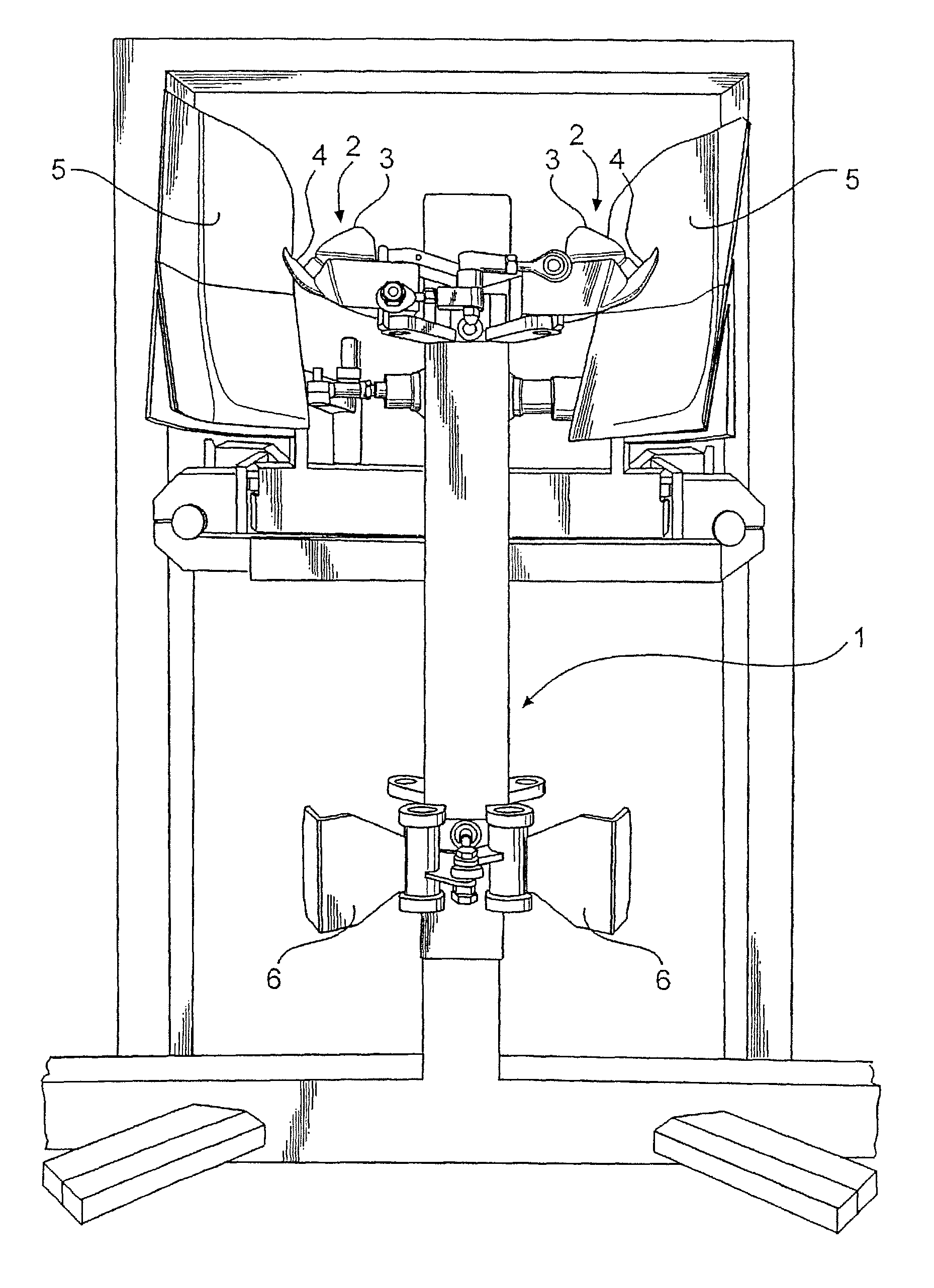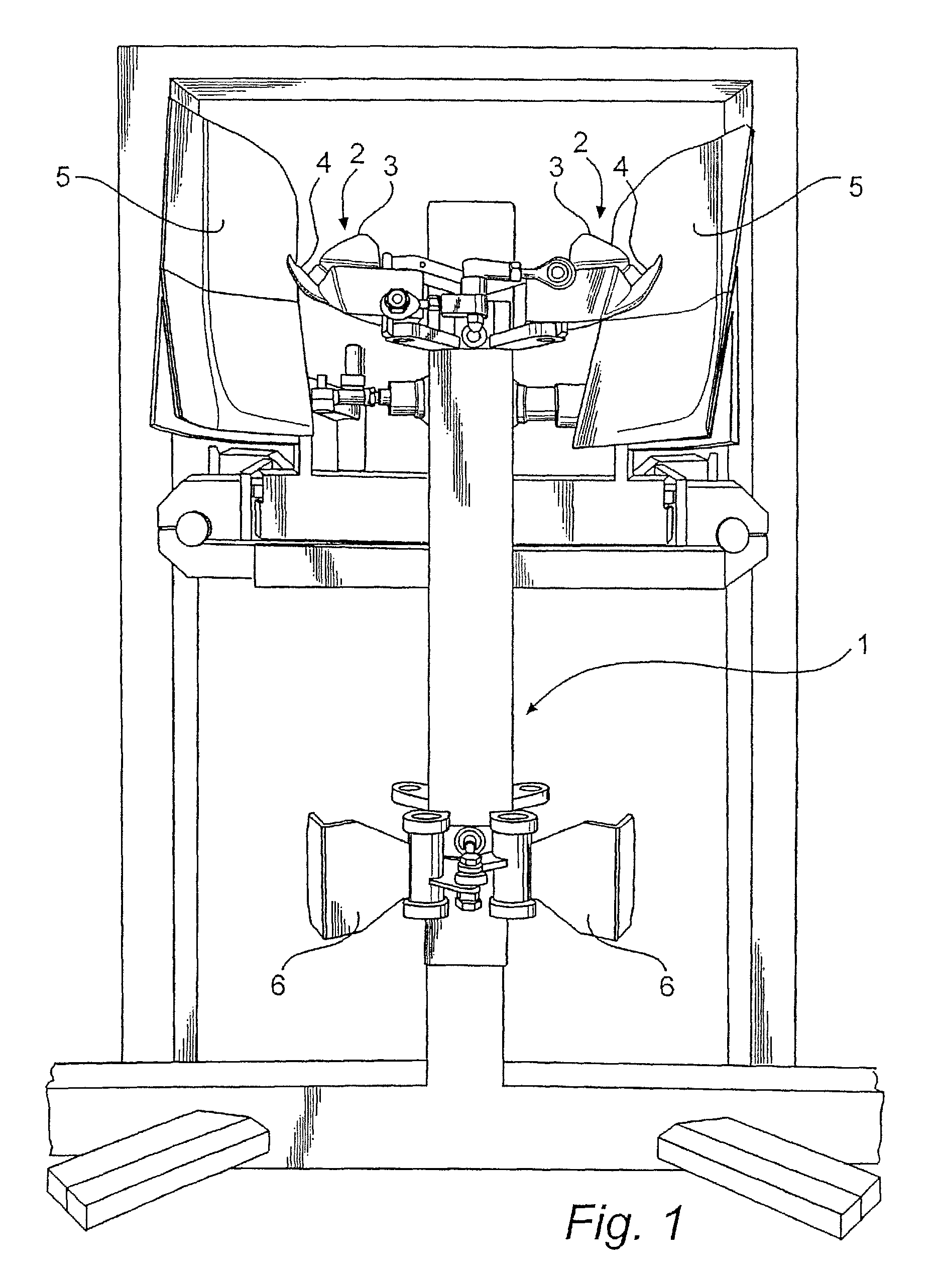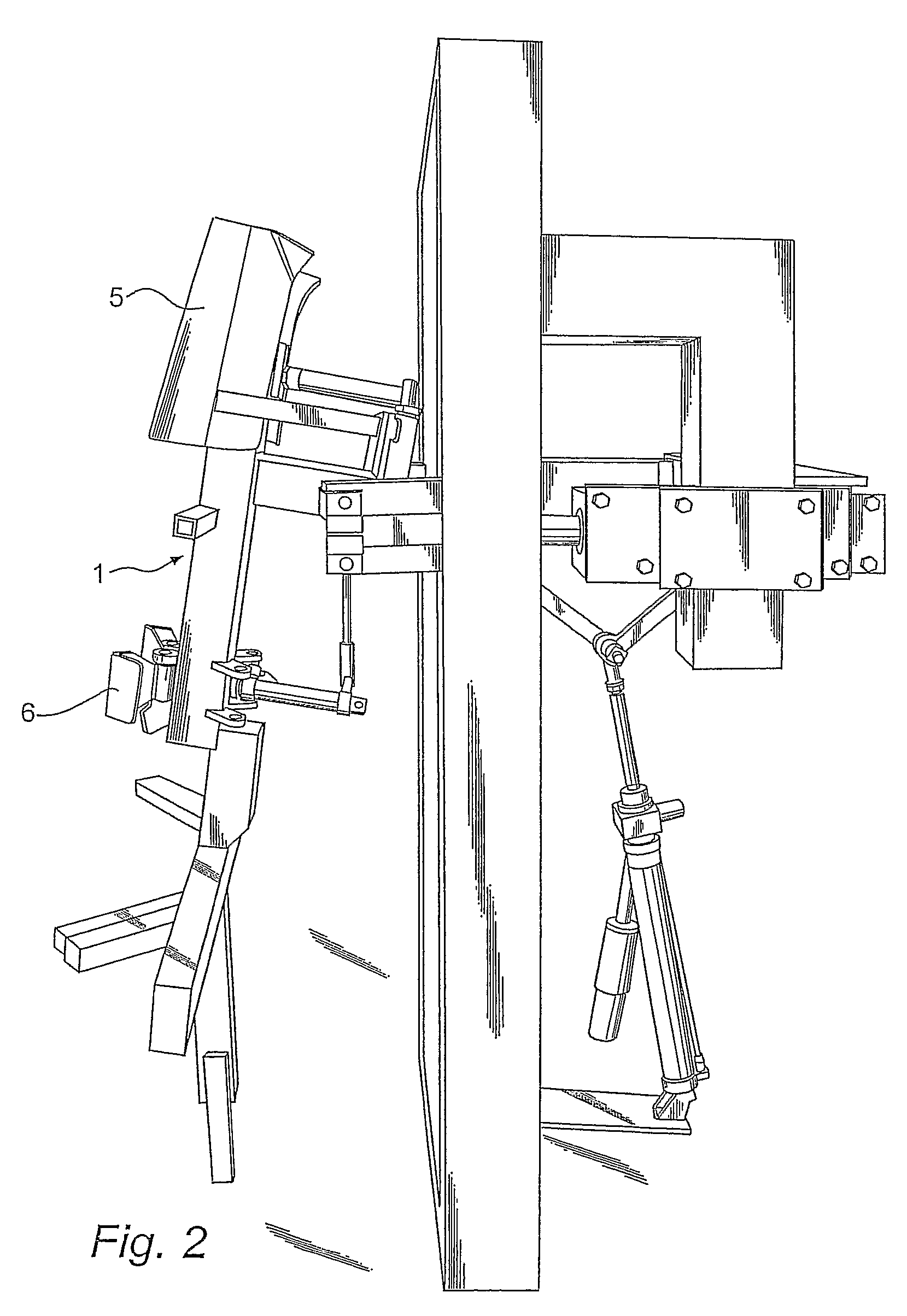Apparatus and method for cutting-free of tender-loin
a technology of apparatus and tenderloin, which is applied in the field of apparatus and method for cutting-free tenderloin, can solve the problems of low tolerance of errors, inability to correct inadequate or inaccurate cutting-free, and relatively high degree of irregularity in the cut-free tenderloin, and achieve good hygiene
- Summary
- Abstract
- Description
- Claims
- Application Information
AI Technical Summary
Benefits of technology
Problems solved by technology
Method used
Image
Examples
Embodiment Construction
[0052]An apparatus according to the disclosure comprises a fixture, a cutting device and a moving device. The fixture 1 shown in FIG. 1 for two half-carcasses has two pubic bone catches 2 with a sharp edge 3 and an upward edge 4 and an upper displacement device 5 and a lower fixation device 6. Both devices are arranged to be movable. The upper displacement device 5 is movable between a fixating position close to the pubic bone catch 2 and an open position away from the pubic bone catch 2. The lower fixation device 6 is movable between an open position in which the two L-shaped plates are rotated forwards and is close to each other at the front of the fixture and a fixating position in which the L-shaped plates are rotated back against the rear side of the fixture. Moreover the pubic bone catch 2 can add to the fixation by being able to be moved between an open position away from the upper displacement device 5 and a fixating position directed against the upper displacement device 5....
PUM
 Login to View More
Login to View More Abstract
Description
Claims
Application Information
 Login to View More
Login to View More - R&D
- Intellectual Property
- Life Sciences
- Materials
- Tech Scout
- Unparalleled Data Quality
- Higher Quality Content
- 60% Fewer Hallucinations
Browse by: Latest US Patents, China's latest patents, Technical Efficacy Thesaurus, Application Domain, Technology Topic, Popular Technical Reports.
© 2025 PatSnap. All rights reserved.Legal|Privacy policy|Modern Slavery Act Transparency Statement|Sitemap|About US| Contact US: help@patsnap.com



